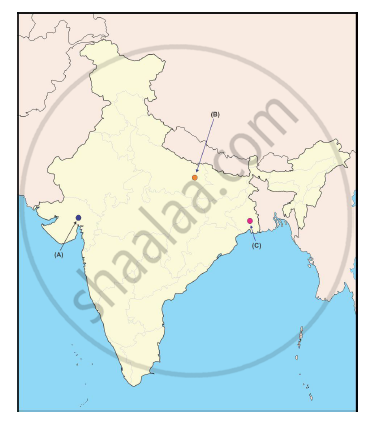Advertisements
Advertisements
प्रश्न
Three Features A, B and C are marked on the given political outline map of India. Identify these features with the help of the following information and write their correct names on the lines marked in the map:
A. The place where the cotton mill workers organized Satyagraha.
B. The place related to the calling off the Non – Cooperation Movement.
C. The place where the Indian National Congress Session was held.

उत्तर

संबंधित प्रश्न
“The democracy has been evolved through struggles and movements all over the world.” Support with statement with examples.
What type of flag was designed during the ‘Swadeshi Movement’ in Bengal? Explain its features.
Describe the popular struggle of Bolvia.
Which organisation led the protest against water privatisation in Bolivia?
Who had designed the 'swaraj flag' by 1921?
Compare the popular struggles of Nepal and Bolivia.
"The struggle of the Nepali people is a source of inspiration to democrats all over the world." Support the statement.
How are popular struggles integral to the working democracy? Explain with an example of Bolivia's struggle against privatisation of water.
Match List I (organisations and struggles) with List II and select the correct answer using the codes given below the lists:
|
List I |
List II |
||
|
1. |
Organisations that seek to promote the interests of a particular section or group |
Α. |
Movement |
|
2. |
Organisations that seek to promote common interest |
Β. |
Political parties |
|
3. |
Struggles launched for the resolution of a social problem with or without an organisational structure |
C. |
Sectional interest groups |
|
4. |
Organisations that mobilise people with a view to win political power |
D. |
Public interest groups |
|
1 |
2 |
3 |
4 |
|
|
(a) |
C |
D |
B |
A |
|
(b) |
C |
D |
A |
B |
|
(c) |
D |
C |
B |
A |
|
(d) |
B |
C |
D |
A |
Why did Mahatma Gandhi start the 'Civil Disobedience Movement'? How did this movement unite the country? Explain.
